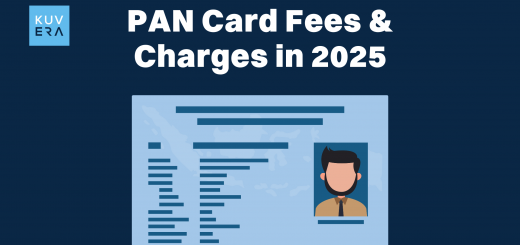The Indian tax system might seem complex already with jargons and calculations. However, navigating through the tax calculations might be the only option to save taxes on your hard earned income for the financial year.
Section 80C of the Income Tax Act provides a wide array of avenues to reduce your taxable income, and understanding these options is crucial for effective financial planning.
Here is a deep dive into the various tax-saving investments available in India.
Let us explore their features, benefits, and how they can contribute to your financial goals.
Understanding Section 80C
Section 80C allows individuals and Hindu Undivided Families (HUFs) to deduct up to ₹1.5 lac from their taxable income by investing in specified instruments. This provision encourages savings and investment while simultaneously reducing your tax burden.
Let us explore some of the prominent investment options under this section.
1. Equity Linked Savings Scheme (ELSS) Mutual Funds
ELSS mutual funds are equity-oriented schemes that offer tax benefits under Section 80C. They have the shortest lock-in period of three years among all 80C investments. However, they follow the FIFO (First In First Out) model for investment maturity calculation. Meaning, the SIP or the Lumpsum you made on 1 March 2025 would mature on 1 March 2028. Investments later than that would mature as and when they complete their respective three-years lock-in.
These funds invest predominantly in equity and equity-related instruments, providing the potential for higher returns compared to traditional fixed-income options.
Recently, a new category in ELSS, called the passive ELSS funds were introduced. We will discuss this later in the blog.
| Feature | Details |
| Lock-in Period | 3 years |
| Asset Class | Equity |
| Potential Returns | High |
| Risk | High |
| Tax Benefit | Up to ₹1.5 lakh under Section 80C |
| Liquidity | After 3 years |
2. Public Provident Fund (PPF)
PPF is a long-term savings scheme offered by the government. It has a lock-in period of 15 years, but partial withdrawals are allowed after the seventh year. The interest earned on PPF is tax-free, making it a popular choice for risk-averse investors.
| Feature | Details |
| Lock-in Period | 15 years |
| Asset Class | Debt |
| Potential Returns | Moderate (Government-backed) |
| Risk | Low |
| Tax Benefit | Up to ₹1.5 lakh under Section 80C, interest tax-free |
| Liquidity | Partial withdrawal after 7 years, full withdrawal after 15 years |
3. National Savings Certificate (NSC)
NSC is another government-backed savings scheme with a lock-in period of five years. The interest earned on NSC is reinvested, and it also qualifies for tax deduction under Section 80C.
| Feature | Details |
| Lock-in Period | 5 years |
| Asset Class | Debt |
| Potential Returns | Moderate (Government-backed) |
| Risk | Low |
| Tax Benefit | Up to ₹1.5 lakh under Section 80C, interest reinvested qualifies |
| Liquidity | After 5 years |
4. Tax-Saving Fixed Deposits (FDs)
Tax-saving FDs offered by banks have a lock-in period of five years. They provide guaranteed returns, making them suitable for conservative investors.
| Feature | Details |
| Lock-in Period | 5 years |
| Asset Class | Debt |
| Potential Returns | Low to Moderate |
| Risk | Low |
| Tax Benefit | Up to ₹1.5 lakh under Section 80C |
| Liquidity | After 5 years |
5. Employee Provident Fund (EPF)
EPF is a retirement savings scheme for salaried employees. Contributions to EPF qualify for tax deduction under Section 80C, and the interest earned is tax-free. However, it needs to be noted that you cannot invest in your EPF, only your employer can contribute on their and your behalf.
| Feature | Details |
| Lock-in Period | Until retirement (with partial withdrawals allowed) |
| Asset Class | Debt |
| Potential Returns | Moderate |
| Risk | Low |
| Tax Benefit | Up to ₹1.5 lakh under Section 80C, interest tax-free |
| Liquidity | Partial withdrawals allowed under specific conditions, full withdrawal at retirement |
6. Sukanya Samriddhi Yojana (SSY)
SSY is a government-backed savings scheme for the girl child. It has a lock-in period of 21 years from the date of account opening or until the girl gets married after turning 18. Contributions to SSY qualify for tax deduction under Section 80C, and the interest earned is tax-free.
| Feature | Details |
| Lock-in Period | 21 years or until marriage after 18 years |
| Asset Class | Debt |
| Potential Returns | Moderate (Government-backed) |
| Risk | Low |
| Tax Benefit | Up to ₹1.5 lakh under Section 80C, interest tax-free |
| Liquidity | Partial withdrawal after the girl turns 18, full withdrawal after 21 years or at marriage after 18 years |
7. National Pension System (NPS)
You can invest in NPS along with the above listed tax-saver schemes. By doing this, you can save taxes over and above your above stated investment choice.
NPS is a retirement savings scheme that allows individuals to invest in a mix of equity, corporate bonds, and government securities. Contributions to NPS qualify for tax deduction under Section 80C, and an additional deduction of up to ₹50,000 is available under Section 80CCD(1B).
| Feature | Details |
| Lock-in Period | Until retirement (with partial withdrawals allowed) |
| Asset Class | Mixed (Equity, Debt) |
| Potential Returns | Moderate to High |
| Risk | Moderate to High |
| Tax Benefit | Up to ₹1.5 lakh under Section 80C, additional ₹50,000 under Section 80CCD(1B) |
| Liquidity | Partial withdrawals allowed under specific conditions, full withdrawal at retirement |
Advent of Passive ELSS Funds For Combining Tax Saving with Wealth Creation
In recent times, passive ELSS funds have gained traction. These funds replicate a specific market index, offering a low-cost alternative to actively manage ELSS funds. These funds aim to provide returns in line with the market by tracking an index, minimising the risk of underperformance associated with active management. This is a very interesting development for passive investing with mutual fund strategies.
Passive ELSS funds can offer a blend of tax savings and wealth creation, making them an attractive option for long-term investors.
So, if you are looking to start SIP now, consider exploring passive ELSS funds to benefit from both tax savings and potential market-linked returns. Mutual fund returns can be increased by the lower expense ratio of passive funds.
How to Tailor Your Investment Approach
When choosing tax saving investments, you can consider your risk appetite, investment horizon, and financial goals. You can diversify your portfolio across different asset classes to mitigate risk. For example, if you are a young investor with a long investment horizon, you may consider allocating a larger portion of your portfolio to equity-based MF investments like ELSS mutual funds. If you have a lower risk appetite, you might want to consider debt-oriented investments like PPF and NSC.
The Importance of SIP Investing
SIP investing or a mutual fund SIP options can be better ways to invest in ELSS funds and other tax-saving instruments. Mutual fund SIPs can help you invest a fixed amount at regular intervals. This can help in rupee-cost averaging and reduce the impact of market volatility. Mutual funds India can offer you a wide range of choices.
Wrapping up!
Tax-saving investments can offer dual benefits. They can help you reduce your tax burden along with building wealth. You can understand the various options available under Section 80C and tailor your investment approach to your individual needs. With this, you can optimise your finances and achieve your different financial goals. You can explore newer options like passive ELSS funds too. However, strategic investment planning is essential for long-term financial success.
Interested in how we think about the markets?
Read more: Zen And The Art Of Investing
Watch here: Is UPI Killing the Toffee Business?












